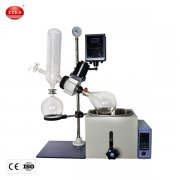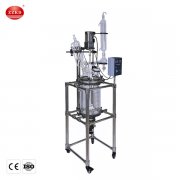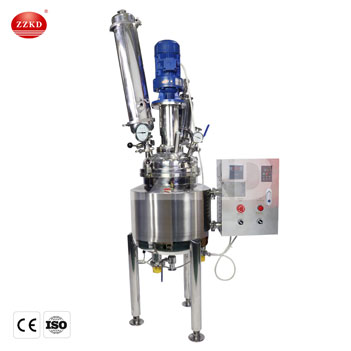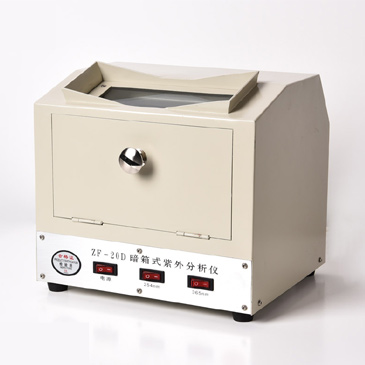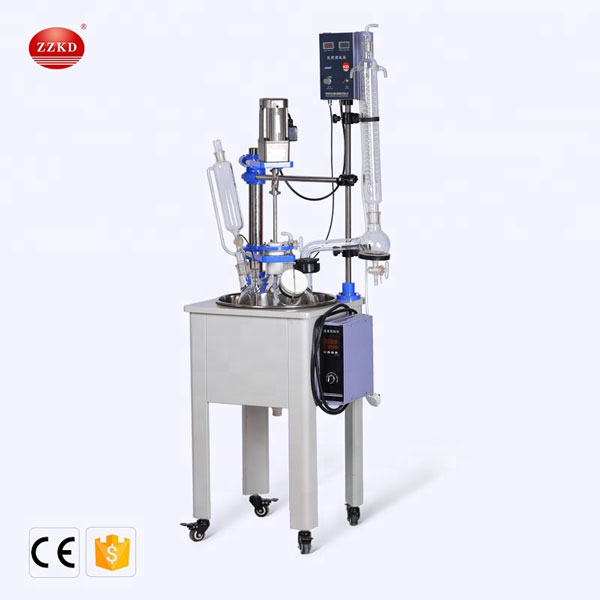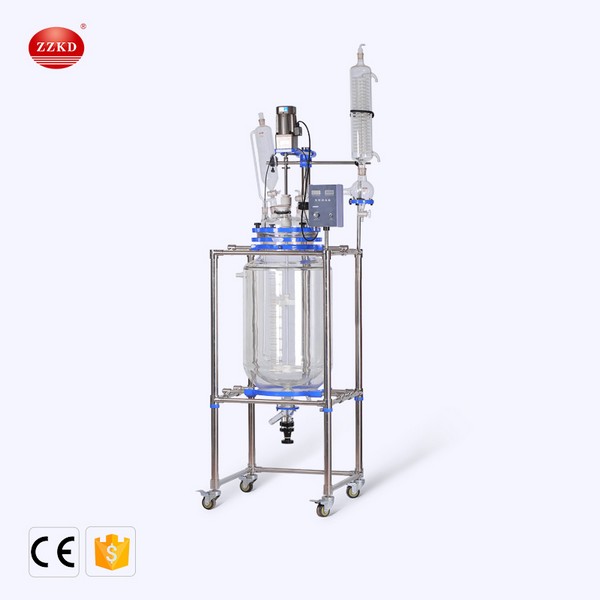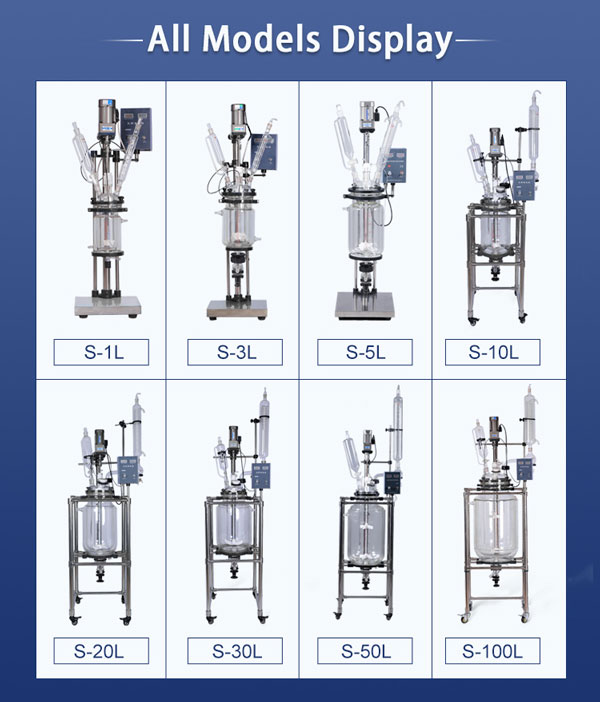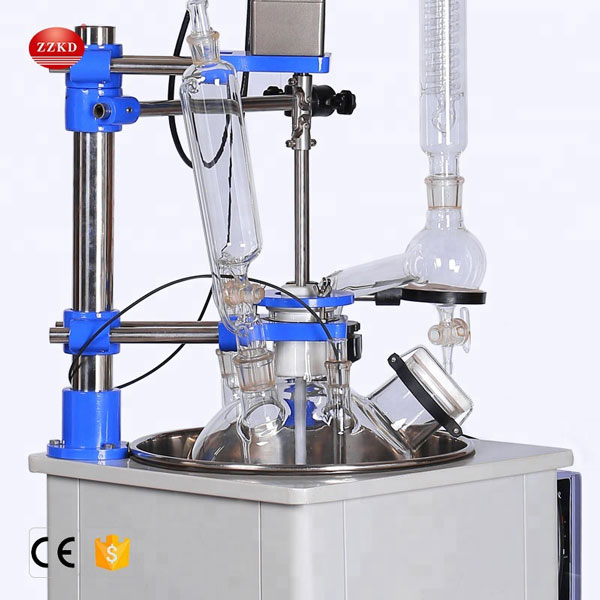Single-layer glass reactors and
Double Wall Glass Reactors are commonly used heating and stirring reaction equipment in laboratories. They can both be used in a closed environment, set constant temperature conditions, and stir samples under normal or negative pressure conditions. Are the reactors used for the same purpose? Next, let's take a look at the difference between
Single layer glass reactor and double-layer glass reactors.
Type Of Glass Reactors
Single layer glass reactor
The single-layer glass reactor can provide high temperature reaction (the highest temperature can reach 300℃); it can also be evacuated to do negative pressure reaction. The single-layer glass reactor can carry out various solvent synthesis reactions under constant temperature conditions. The reaction part of the instrument is a controllable and fully sealed structure. It can continuously inhale various liquids and gases by using negative pressure, and can also do reflux or distillation at different temperatures.
Working principle of single glass reactor
The reaction kettle body is directly heated by the silver film heating plate, so that the materials in the reaction kettle are heated at a constant temperature, and stirring can be provided. The materials are reacted in the reactor, and the evaporation and reflux of the reaction solution can be controlled. After the reaction is completed, the lid and motor part of the single-layer glass reaction kettle are mechanically lifted (electric lifting is optional), and the kettle body can be rotated 360 degrees to facilitate material dumping and discharging, and the operation is extremely convenient. It is an ideal equipment for modern chemical sample, medium sample experiment, biopharmaceutical and new material synthesis.
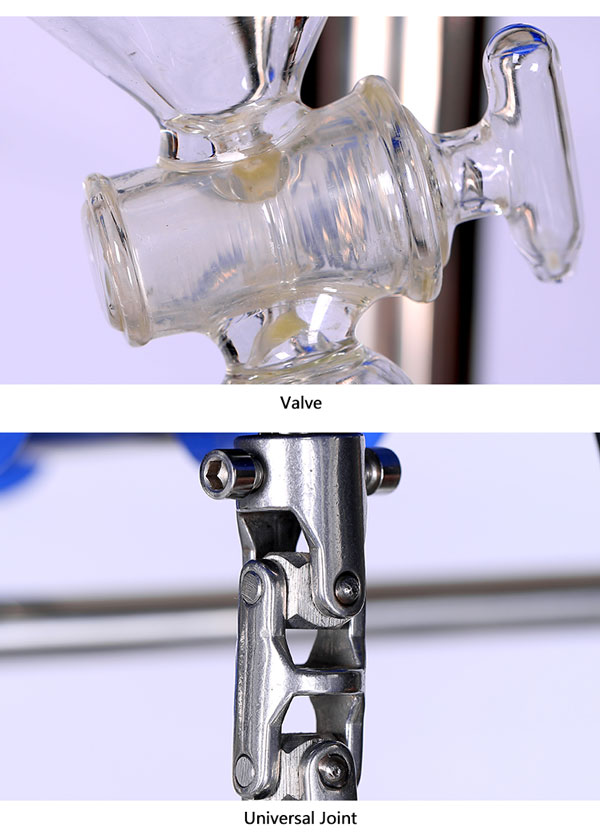
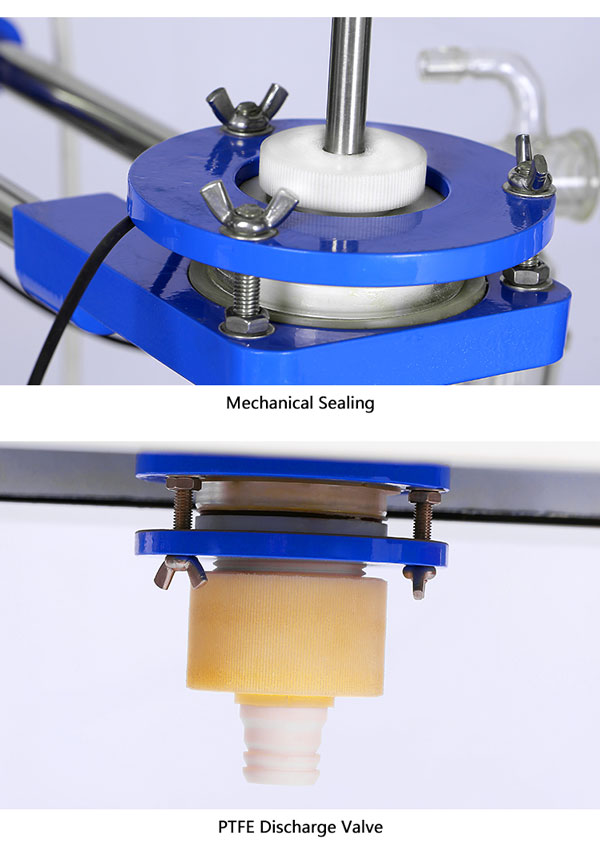
Jacket glass reactor
The interlayer of the
Double Wall Glass Reactor can be used for high-temperature reaction (the highest temperature can reach 300℃), and it can also be used for low-temperature reaction (the low temperature can reach -80℃); the double-layer glass reactor can be evacuated for negative pressure reaction. The double-layer glass reactor can carry out stirring reaction at room temperature, high temperature reaction, negative pressure vacuum distillation reaction, separation and extraction, distillation reflux reaction, and concentration reaction.
Jacket glass reactor working priciple
Putting a reaction solvent in the inner layer of the glass can be used for stirring reaction, and the interlayer can be connected to different cold and heat sources (refrigerated liquid, hot water or hot oil) for cyclic heating or cooling reaction. Through the interlayer of the double-layer reactor, a constant temperature (high temperature or low temperature) hot melt medium or cooling medium is injected to heat or cool the materials in the reactor at a constant temperature. At the same time, the stirring reaction can be carried out under normal pressure or negative pressure according to the requirements of use. The material is reacted in the reaction kettle, and the evaporation and reflux of the reaction solution can be controlled. After the reaction is completed, the material can be discharged from the discharge port at the bottom of the kettle, and the operation is extremely convenient.
How To Choose Type Of Glass Reactor?
At present, there are various glass reaction equipment on the market, and single-layer glass reactor and double-layer glass reactor are relatively common equipment. So, how do we choose these two glass reactors?
First of all, the single-layer glass reactor can complete high temperature, low temperature, vacuum and other reaction experiments at the same time. The operation is simple, the reaction process is clear at a glance, and it is convenient to control the reaction process. It is an ideal pilot and production equipment for modern synthetic chemicals, biopharmaceuticals and new materials.
The double-layer glass reactor is designed with double-layer glass, and the inner layer is equipped with a reaction solvent, which can be used for stirring reaction. . The double-layer glass reaction kettle can be stirred and reacted under normal pressure or negative pressure according to the requirements in the closed glass reaction kettle under the set constant temperature, and can do the reflux and distillation of the reaction solution. The double-layer glass reaction kettle is a Ideal equipment for modern chemical, biopharmaceutical and new material synthesis.
The double glass reactor is based on a multifunctional single reactor. And after years of improvement, the reactor is based on a single multifunctional glass reactor, which facilitates high and low temperature control, rapid temperature rise, cooling requirements in the experimental process, and requirements for modern laboratories, chemistry, and pharmaceuticals.
In terms of difference, the body of the double-layer glass reactor is divided into two layers, and the middle part of the outer layer and the inner layer is called the interlayer. The heating of the double-layer glass reactor is completely accomplished through the interlayer.
Specifically, first connect the double-layer glass reaction kettle to the circulating oil bath and put hot oil in the interlayer, and plug in the power supply to heat the material; the same is true for low-temperature reactions, just replace the solvent in the interlayer with Ethanol will do just fine. The interlayer can make the heating of the material uniform, and at the same time, it is convenient to directly observe the stirring reaction process of the material. Through the interlayer, the double-layer glass reactor can not only complete high temperature experiments, but also complete low temperature reactions. The
Single layer glass reactor has its own heating device, and does not need to use the interlayer to complete the heating.
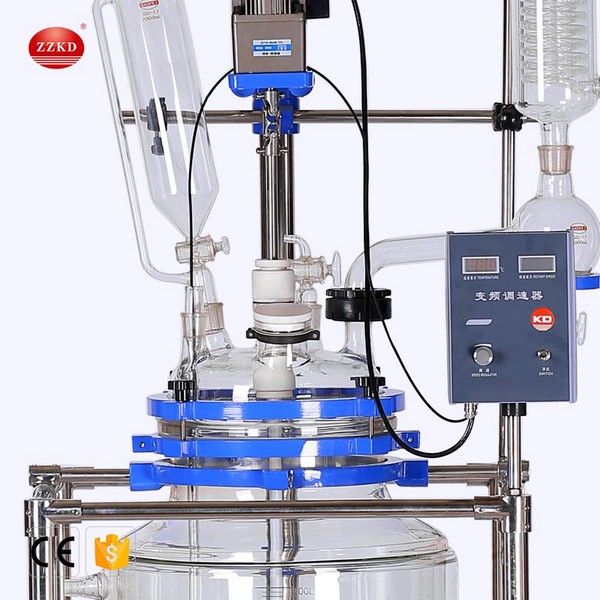
In addition, I compiled a comparison of the parameters of 50L, 100L single-layer glass reactors and double-layer glass reactors, hoping to help you choose
Type of glass reactor parameter:
|
Model |
S-50L |
S-100L |
F-50L |
F-100L |
|
Voltage(V) |
220V/50HZ |
2220V/50HZ |
220V/50HZ |
220V/50HZ |
|
Stirring Power(W) |
120 |
250 |
120 |
250 |
|
Stirring Speed(rmp) |
60~600 |
60~600 |
60~600 |
60~600 |
|
Capacity(L) |
50 |
100 |
50 |
100 |
|
Heating Power(KW) |
- |
- |
5 |
7.5 |
|
Temperatureusing Range |
'-80℃-250℃ |
'-80℃-250℃ |
-80℃-250℃ |
-80℃-250℃ |
|
Motor Torque(g/cm) |
1500 |
3000 |
1500 |
3000 |
To sum up the above, if the test requirements require multi-stage temperature control requirements, choose a double-layer glass reactor, and the temperature control equipment matched with the double-layer reactor can control the temperature in stages. If there are no special requirements, choose a single-layer reactor. After understanding these, I believe we can better choose the glass reactor.
From the above content, we can find that the classification of reactors is based on different types, and the uses of different reactors are also different. If you need reactor equipment, please buy it according to your own needs. If you are not sure which one. The reactor is suitable for you, welcome to call us, we will serve you wholeheartedly.

 Products
Products





